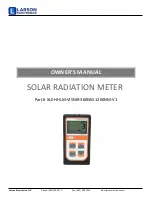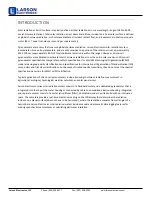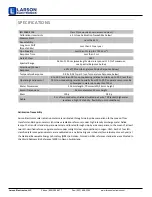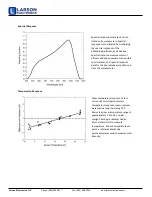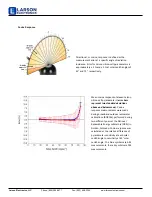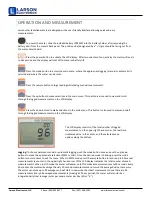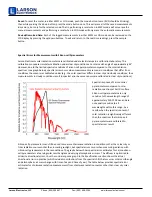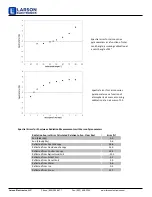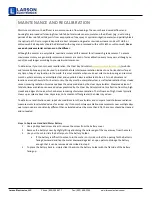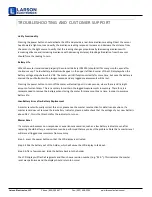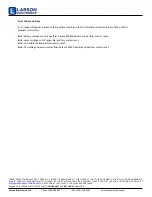
Reset: To reset the meter, in either SMPL or LOG mode, push the mode button twice (RUN should be blinking),
then while pressing the down button, press the mode button once. This will erase all of the saved measurements
in memory, but only for the selected mode. That is, performing a reset when in SMPL mode will only erase the
manual measurements and performing a reset when in LOG mode will only erase the automatic measurements.
Review/Download Data: Each of the logged measurements in either SMPL or LOG mode can be reviewed on the
LCD display by pressing the up/down buttons. To exit and return to the real-time readings, press the sample
button.
Larson Electronics, LLC
Phone: (800) 369-6671
Fax: (903) 498-3364
www.larsonelectronics.com
Spectral Errors for Measurements with Silicon-cell Pyranometers
Larson Electronics
solar radiation meters are calibrated under electric lamps in a calibration laboratory. The
calibration procedure simulates calibration under clear sky conditions at a solar zenith angle of approximately 45°.
However, due to the limited spectral sensitivity of silicon-cell pyranometers compared to the solar radiation
spectrum (see graph below), spectral errors occur when measurements are made in conditions that differ from
conditions the sensor was calibrated under (e.g., the solar spectrum differs in clear sky and cloudy conditions, thus
measurements in cloudy conditions result in spectral error because sensors are calibrated in clear sky conditions).
Spectral response of
Larson
series
pyranometers compared to solar
radiation spectrum at Earth’s surface.
Silicon-cell pyranometers are only
sensitive to the wavelength range of
approximately 350-1100 nm, and are
not equally sensitive to all
wavelengths within this range. As a
result, when the spectral content of
solar radiation is significantly different
than the spectrum that silicon-cell
pyranometers were calibrated to,
spectral errors result.
Silicon-cell pyranometers can still be used to measure shortwave radiation in conditions other than clear sky or
from radiation sources other than incoming sunlight, but spectral errors occur when measuring radiation with
silicon-cell pyranometers in these conditions. The graphs below show spectral error estimates for
Larson
silicon-
cell pyranometers at varying solar zenith angles and varying atmospheric air mass. The diffuser is optimized to
minimize directional errors, thus the cosine response graph in the Specifications section shows the actual
directional errors in practice (which includes contributions from the spectral shift that occurs as solar zenith angle
and atmospheric air mass change with time of day and time of year). The table below provides spectral error
estimates for shortwave radiation measurements from shortwave radiation sources other than clear sky solar
radiation.

